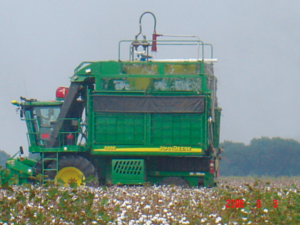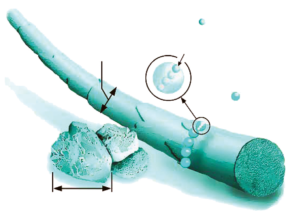Particulate matter (PM) is the term applied to dust and other small particles that are suspended in the air. The Environmental Protection Agency (EPA) regulates PM as a pollutant because it can cause health problems when inhaled. There are two categories of PM— coarse and fine.
Coarse PM, typically found near roadways and dusty industries, is made up of particles larger than 2.5 micrometers and smaller than 10 micrometers in diameter.
Fine PM, found in smoke and haze, is made up of particles 2.5 micrometers in diameter and smaller. These particles are emitted from sources such as combustion. They can also form when gases emitted from power plants, industries and automobiles react in the air.

Cotton gins, grain elevators, feed mills, feedlots and many other agricultural operations have been subject to EPA regulations for years. As environmental regulations become more stringent, field operations such as tillage may be subject to regulations as well.
The EPA has established a National Ambient Air Quality Standard for PM and other pollutants. As the EPA and state regulatory agencies refine their regulations, it is important to recognize that not all PM is the same. Most of the PM in urban environments is fine, while most agricultural PM is larger than the coarse classification. In urban areas most particulates come from combustion or are emitted from smokestacks and automobiles. These finer particles are considered a much greater health risk than larger particles. Particulates from agriculture contain a much higher percentage of soil particles, which are usually more than 20 microns in diameter and do not pose a health risk.
The current National Ambient Air Quality Standard limits the concentration of coarse PM particles in emissions to 150 µg/m3 and the concentration of fine PM particles to 35 µg/m3 . EPA is proposing to introduce a new standard for coarse PM. The proposed concentration limit is 75 µg/m3 on a 24-hour-average basis.

Particulate matter is classified in terms of diameter. Here, the diameter of particulate matter is compared to the width of a human hair.
References
American Conference of Governmental Industrial Hygienists. 1997. Threshold Limit Values and Biological Exposure Indices. Cincinnati, Ohio: ACGIH.
Shaw et al. 2004. Performance of Particulate Matter Samplers When Exposed to Coarse Fraction Aerosol Particles. Center for Agricultural Air Quality Engineering and Science.
Original Article by Russell McGee and Saqib Mukhtar.
Produced by Agricultural Communications, The Texas A&M University System
Extension publications can be found on the Web at: http://tcebookstore.org
